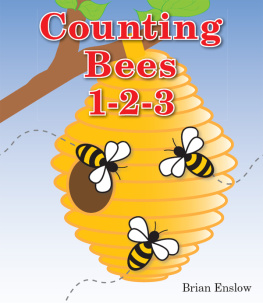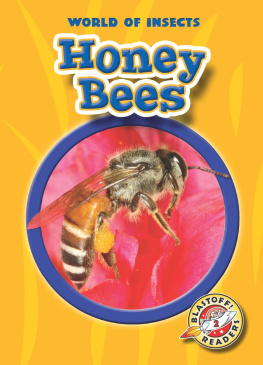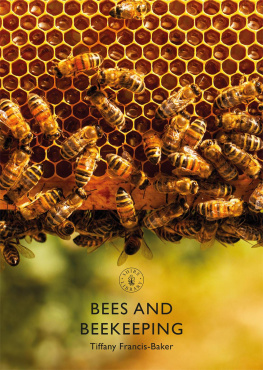
Text copyright 2022 by Black Dog & Leventhal Publishers
Cover design by Kevin Knight
Hachette Book Group supports the right to free expression and the value of copyright. The purpose of copyright is to encourage writers and artists to produce the creative works that enrich our culture.
The scanning, uploading, and distribution of this book without permission is a theft of the authors intellectual property. If you would like permission to use material from the book (other than for review purposes), please contact permissions@hbgusa.com. Thank you for your support of the authors rights.
Black Dog & Leventhal Publishers
Hachette Book Group
1290 Avenue of the Americas
New York, NY 10104
www.hachettebookgroup.com
www.blackdogandleventhal.com
First Edition: March 2022
Produced by Girl Friday Productions, Seattle www.girlfridayproductions.com
Black Dog & Leventhal Publishers is an imprint of Perseus Books, LLC, a subsidiary of Hachette Book Group, Inc. The Black Dog & Leventhal Publishers name and logo are trademarks of Hachette Book Group, Inc.
The publisher is not responsible for websites (or their content) that are not owned by the publisher.
The Hachette Speakers Bureau provides a wide range of authors for speaking events. To find out more, go to www.HachetteSpeakersBureau.com or call (866) 376-6591.
Library of Congress Cataloging-in-Publication Data has been applied for.
ISBNs: 978-0-7624-7840-8 (hardcover); 978-0-7624-7841-5 (ebook)
E3-20220121-JV-NF-ORI
W e live on a planet ruled by insects. There are more of these six-legged creatures than anything else on Earth. In fact, there are 900,000 species, or different kinds, of them. About 20,000 of these species are bees.
Some bees are so tiny you almost need a microscope to see them. Some are big enough to fit in the palm of your hand. They all share a wasp ancestor that existed millions of years ago.
Bees drink flower nectar and many types also collect pollen, the dustlike grains inside flowers. To allow them to transport pollen back to their hives for food, these bees have hairs all over their bodies to help pollen stick to them. The pollen-collecting hairs on their legs are called scopa.
Not all bees collect pollen; the ones that dont are hairless. Some bees even feed meat to their babies instead of pollen or nectar. But all bees start as eggs that turn into larvae, then pupae, then adults.
Some bees live in holes in wood. Some live in wax hives. Others live in holes in the ground. Most bees like their habitats, or the places where they live, to be warm and dry. But some bees dont mind it chilly and damp. Many bees are solitarythey live alone. Some bees are social, and they live in groups called colonies. Colonies have queen bees that only lay eggs while the other females do everything else. Bees that live in colonies make honey, but solitary bees dont. They dry flower nectar in their hives until it is thick. Only honeybees make enough honey to share with humans.
Some bees live in between solitary and colony life. They are sort of solitary, but females make their nests close to each other. Sometimes they even help each other build.
Bees may collect nectar and pollen from different types of flowers. These are generalist bees. Other bees collect nectar and pollen from just one type of flower. These are specialist bees. When we talk about native bees, we mean bees that come from the place where you find them, just like you may be a native New Yorker or Los Angeleno or Mexican. Other bees are introduced. They were brought from one place to another. Some may even be invasive. That means they took over the new place from the native bees that lived there, and now no one can get rid of them.
Scientists think this is one reason native bees in some places are disappearing. They are rare so they are becoming endangered and scientists worry that they may go extinctand some are extinct already. Or they may be threatened, meaning they might soon become endangered. How can you help? Get to know some of these amazing insects on the pages of this book. Look for them when you go outside. Then work to make the world around you better for bees. Well even tell you how!

A western honeybee collects nectar and pollen from a coneflower.

This beekeeper is dressed for success (in collecting honey from the hives, that is).
In a lot of ways, the 20,000 species of bees worldwide are alike. All bees have four wings. They all have a head, a thorax, and an abdomen that are clearly separate (see Bees at a Glance, ). They have two compoundeyes on the sides of their heads. They have three simple eyes on the tops of their heads. They have antennae, mouthparts with a tongue, and jaws called mandibles. They might have a few teeth or a lot of them.
HOW TO ID BEES
How can you tell one bee from another? This can be tricky. Even scientists sometimes have a hard time telling them apart. In the bee profiles throughout this book, youll get to look at the similarities and differences among species of bees. But sometimes, we need to do more research on hard-to-identify bees. One way is to practiceresearchers spend lots of time studying bee species around the world. Another way is to get to know their taxonomy. A taxonomy is a system for arranging living things into smaller and smaller groups. Its kind of like a family tree.
THE FAMILY TREE OF TAXONOMY
Heres how bees fit in on that tree:
Kingdom Animalia (all animals, including rhinos and penguins)
Phylum Arthropoda (animals with exoskeletons, such as spiders and lobsters)
Class Insecta (bugs!)
Order Hymenoptera (ants, bees, sawflies and wasps)
Family Hymenoptera with common ancestor
Genus Closely related bees (such as all honeybees)
Species Bees that are similar enough to mate with each other
Subspecies Species with regional differences
Bees certainly keep busy, but a lot of their activity happens inside the hive or nest. Mason bees are solitary, but peek inside the hive of communal bees, and youll find hundreds, maybe even thousands, of bees all working together to support their colony. To do that, each bee has a job:
Queen: In each colony of bees, there is one queen whose job it is to lay all the eggs for the hive. Some queen bees will lay up to 2 million eggs in their lifetime!
Drone bees: In a hive with tens of thousands of bees, only about 100 are males, also known as drones. You can pick them out in a crowded hive by their bigger bodies and huge eyes. These guys have just one job: mate with the queen. Thats all they dotheyre otherwise fed and cared for by worker bees.
Worker bees: Every single bee in a colony thats not a queen bee or a drone is a worker bee. All worker bees are female, and they do everything but lay eggs or mate. Worker bees will have several jobs in their lives:
















